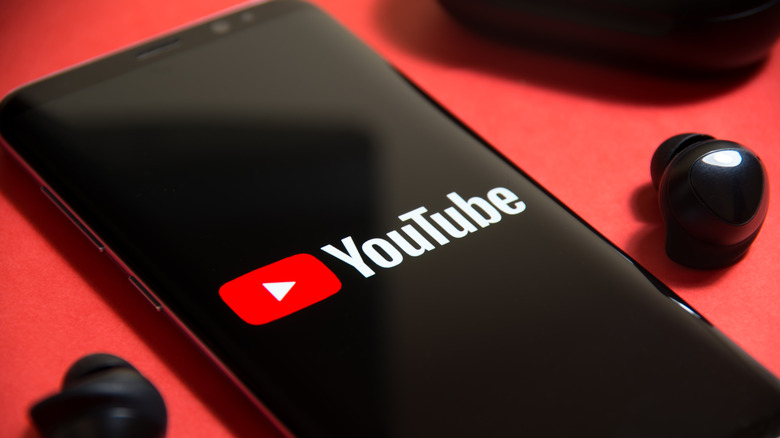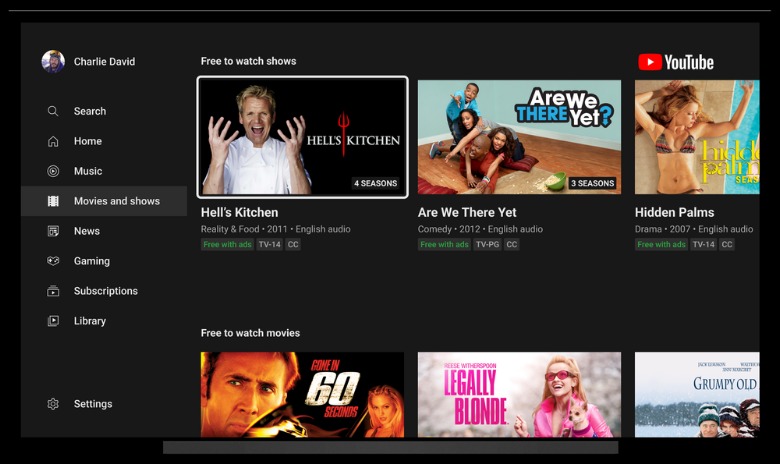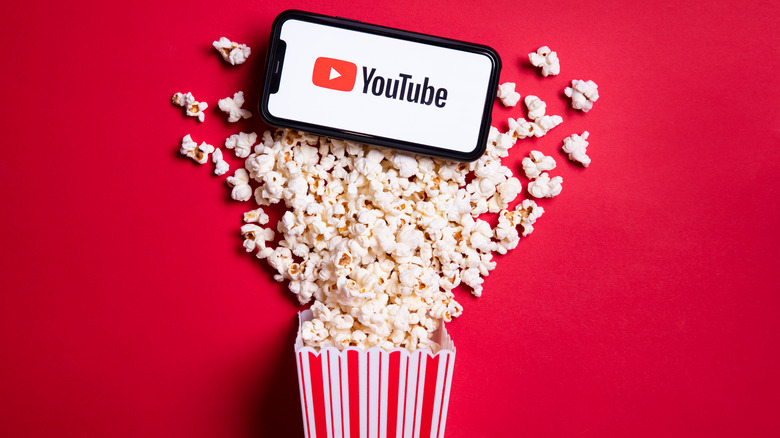Why YouTube Just Added Tons Of Free Movies And Television Shows
In a surprising move, YouTube has just added hundreds of TV shows and movies to its lineup, and all of these titles are available for free. If you're in the United States, you can now indulge in over 4,000 episodes of various shows and hundreds of movies at no extra cost, all of it on YouTube. While this is a nice (if unexpected) move from YouTube, most of us know better than to take it at face value. Why would a service that is trying to make money suddenly decide to give away thousands of hours of content for free? The answer is simple: to make even more money.
Most of us are paying for a streaming service of some sort. Be it Netflix, Hulu, HBO Max, or Disney+, there are plenty of websites and apps that grant access to movies and shows for a monthly subscription. So far, Google (which owns YouTube) has no horse in this race, but it does have YouTube. YouTube comes with a Premium plan that lets you watch ad-free, but anyone with a PC and a bit of tech-savvy can circumvent the ads without having to pay the price of YouTube Premium. However, the paid subscription also grants the user access to exclusive content and allows video playback even when you tab out of the app.
Google, aside from YouTube, also used to have the Play Store, which on top of apps also sold movies and shows. However, the company has recently announced that it's moving on from that and will focus on apps and games in the Play Store (via Ars Technica). Where does that leave YouTube, and what exactly is Google trying to do?
New movies and shows will arrive every week
YouTube's decision is very strategic. Although all of these movies and shows are available free of charge, users will have to watch advertisements every so often. This choice might seem counterintuitive, but YouTube is not the first service to adopt an ad-supported model. Just recently, Disney+ announced that it will be releasing a cheaper subscription tier that costs less per month but plays some ads while you stream. Similarly, Peacock, Roku, and Tubi also operate on an ad-supported basis.
Considering that YouTube Premium has little to offer compared to services like Netflix, switching to an advertisement-friendly model might be the right way to go for YouTube. However, the content is still being given away for free right now, and some users may find their way around the ads. Similarly, those who subscribe to YouTube Premium will have access to the same catalog of shows and movies, but will not have to deal with ads.
Will YouTube one day decide to put all that content behind a definite paywall or will it stick to the current model? It's hard to say, but the platform certainly has big plans. YouTube has revealed that it plans to add new movies and shows on a weekly basis. Right now, the lineup includes classics such as "10 Things I Hate About You" and "Legally Blonde," with "Runaway Bride" and other fan favorites to join the mix soon.
The evolution of streaming services is a strange thing
In the early days of YouTube, the website was focused on all manner of creativity and simply documenting the lives of people who liked to vlog for fun. Obviously, YouTube has come a long way since then. The company used to produce its own shows with the help of famous YouTubers as part of a service called YouTube Originals. Now, it seems to be moving away from that too, and it has shifted its focus to promote Shorts. YouTube Shorts, much like Snapchat stories or quick TikToks, are videos that are fast and easy to consume, click through, and move on.
Right now, it's hard not to feel that YouTube may be split in half. With Netflix, Peacock, and other such platforms on one end, and Instagram, TikTok, and similar social media apps on the other, YouTube is trying to fit in with the crowd on both sides, which is no easy feat. It requires being able to appeal to different demographics and provide all kinds of content as opposed to focusing on just one type of creativity. On the other hand, YouTube's competitors are also branching out, seeing as TikTok has recently extended the maximum video length to a whopping 10 minutes.
Whether YouTube plans to one day become a subscription service the likes of Netflix is difficult to say, but it's very unlikely. This ad-supported model will likely stick around for a while as YouTube gives it a trial run. While it's nice to get some content for free for a change, it does feel a bit like we've come full circle. We escaped television programs to streaming platforms to avoid the ad breaks. Now, we're coming back for more ads to stream our favorite shows for less.



